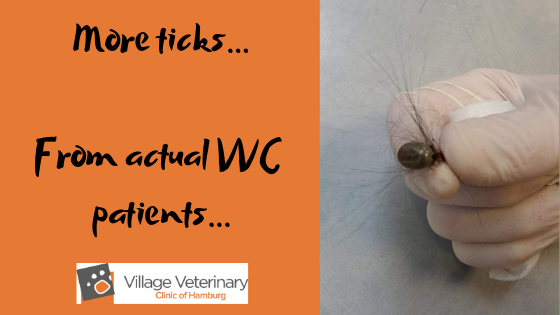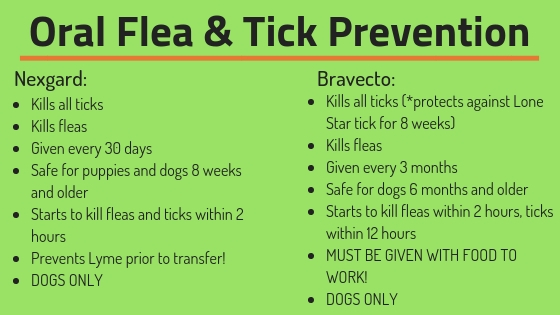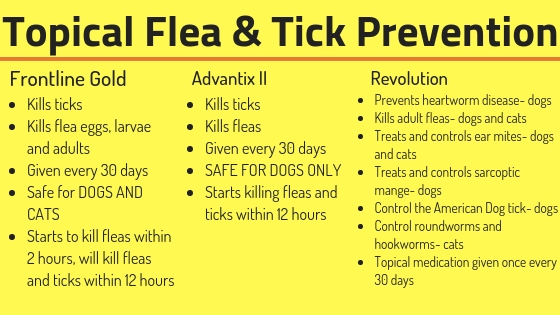Pet Ticks Prevention
Pet Ticks Prevention
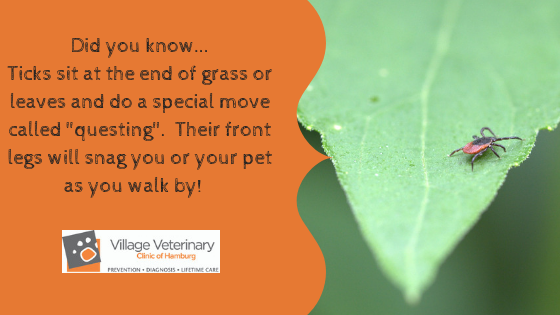
All ticks have different life stages:
- Larvae
- Nymph
- Adult
New York State has a HIGH level for Lyme Disease, which is carried by the Blacklegged (deer) tick. Did you know that this is not the only tick that calls New York State home?
New York State has FOUR ticks:
- Blacklegged (deer) tick
- Lone Star tick
- American Dog tick
- Brown Dog tick
Each of these ticks carries its own diseases and has their own unique life stages.
It is important to know that TICKS ARE NOT KILLED BY THE WINTER OR SNOW! Ticks actually create a protective barrier and adapt themselves to the cold temperatures, so they just “hibernate.” There are have been studies done by placing ticks in the freezer, when they were taken out and defrosted, they just woke up!
The Black-legged (deer) tick adult life stage is actually ACTIVE during the winter! It just needs temperatures above freezing (which is technically 32 degrees F) to start looking for a meal! They are also hitching rides on deer or other wildlife, where they can keep warm and feed.
YEAR-ROUND PREVENTION IS KEY!
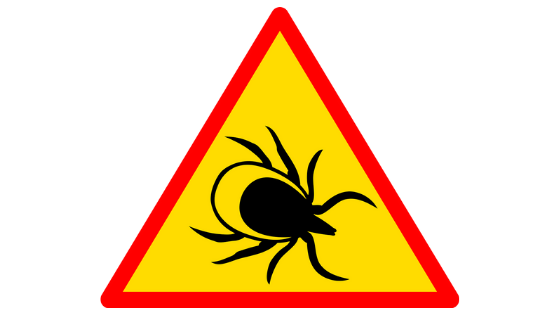
Blacklegged (Deer) Tick:
This is the most common type of tick in our area!
The Blacklegged (deer) tick is the carrier of Lyme Disease in our area! Erie County, NY is at HIGH risk for Lyme Disease!
Along with carrying Lyme disease, the Blacklegged (deer) tick also carries Anaplasmosis and Babesiosis.
Adult Blacklegged (Deer) Ticks:
- They are most active from October- May… that means over the winter months in our area!!!!
- Female deer ticks lay 1500-2000 eggs at once (yikes, that’s a lot of new baby ticks!)
- Males and females are always found in a pair… so if you see one, the other is not far behind!
- The blacklegged (deer) ticks are one of the smallest species adult ticks. The adults are smaller than the size of your finger nail.
Nymphs Blacklegged (Deer) Ticks:
- Active May-August
- Nymphs also are capable of carrying Lyme, Anaplasmosis, and Babesiosis
- Nymphs are about the size of a poppyseed!
Larval Blacklegged (Deer) Ticks:
- Active July-September
- They are the only stage to NOT carry disease
- Larvae are soooooo small they are can fit through the fibers of socks!
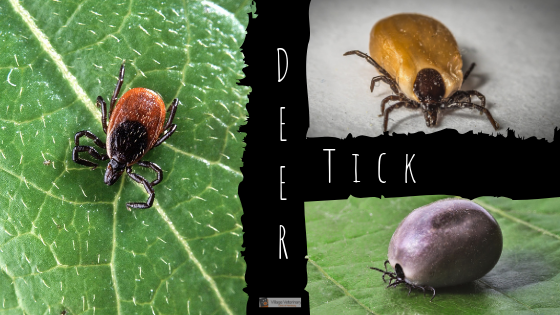
Lone Star Tick:
Lone Star ticks are considered aggressive human biters
These ticks carry Ehrlichiosis, Rocky Mountain Spotted Fever, STARI (southern tick-associated rash) and Tularemia
Lone Star Adult Ticks:
- Adults are active April-late August
- Females can lay 2,500-3,000 eggs (that’s a ton of ticks!)
- The “Lone Star” tick name is a bit misleading because they in fact are not named after the Lone Star state, Texas. They are named after the single or “lone” dot or “star” found on their backs. In fact, these ticks are typically found in the northeast, not the south.
Nymph Lone Star Ticks:
- Active May-early August
- This life stage can be very aggressive. They can find their host, climb quickly up your leg, and be attached in less than 10 minutes!
Larval Lone Star Ticks:
- Active July- late September
- They are the only stage that does not carry disease
Red Meat Allergy:
Lone Star tick bites can occasionally cause an allergic reaction to meats caused by a carbohydrate called alpha-gal. This specific allergy is triggered by this tick bite!
Alpha-gal is found in mammalian meat cells, such as pork, beef, or lamb. When you have the tick bite, the tick transmits the alpha-gal into you causing your body to build up an immune response to it. So the next time you go to eat meats that contain alpha-gal (examples: steak, beef, lamb, etc) your body has an allergic reaction.
Allergic reactions can range from gastrointestinal disorders, upset stomach, nausea, diarrhea when eating red meat. It can also result in an anaphylactic reaction or hives.

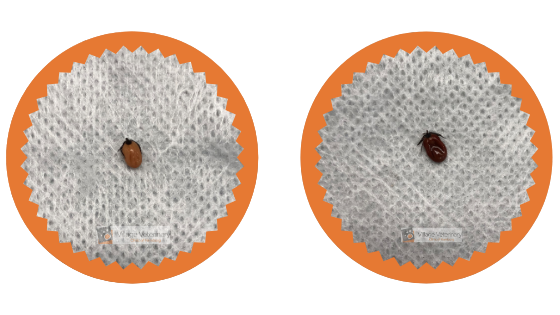
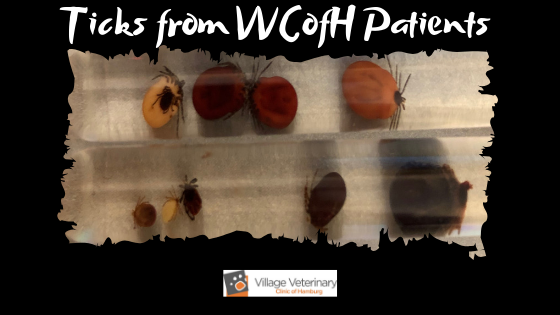
Brown Dog Tick:
These ticks can be found in every state in the country
These ticks commonly infest homes, kennels, or even pets (if you have seen photos of dogs with their ears or toes loaded with ticks… that is the Brown Dog Tick!)
All life stages transmit disease, which includes Ehrlichiosis, Babesiosis, and Rocky Mountain Spotted Fever
Adults can lay up to 4,000 eggs!
The adults, nymphs, and larvae can be found at all times of the year.

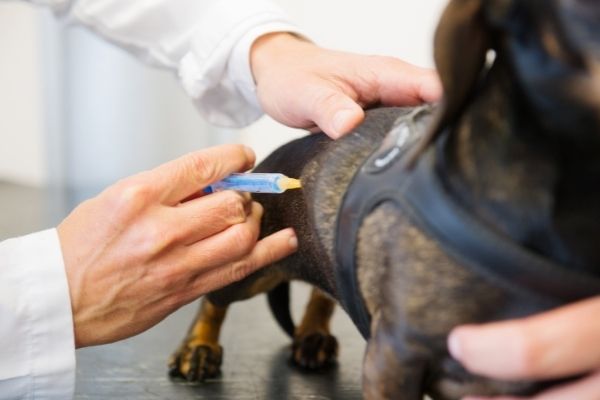
Lyme Vaccine:
The vaccine can act as an added barrier of protection against Lyme Disease!
Remember, Erie County, NY is at HIGH risk for Lyme Disease!
How does the vaccine work?
Why can the vaccine be helpful?
-
- You forgot to give your prevention, now you are 3 days late…
- You gave your dog a bath in dish soap after applying topical prevention…
- You didn’t give your Bravecto with food…
- You are giving prevention “seasonally” (remember ticks are year-round!)
Why is it important to give year-round prevention AND the vaccine?
- Erie County, NY has HIGH levels of Lyme, which is what the vaccine prevents against. But remember, New York State is home to 3 other ticks. The diseases carried by these ticks are not covered by this vaccine. The Lone Star tick, American Dog tick, and Brown Dog tick together can carry diseases such as Ehrlichia, Tularemia, STARI, and Rocky Mountain Spotted Fever!
- LUCKILY, ORAL OR TOPICAL PREVENTIONS WILL PROTECT YOUR PET AGAINST THESE DISEASES!
Lyme Disease in Dogs:
Lyme disease is caused by a spiral-shaped microscopic organism, or spirochete, called Borrelia burgdorferi. This disease is transmitted through a tick bite by the Blacklegged (deer) tick (Ixodes scapularis), which is the tick in our area.
Lyme disease is one of the most commonly reported vector-borne diseases that affect both humans and dogs. Although you cannot pass Lyme from one dog or another or get Lyme from your dog, the same tick can bite and pass Lyme onto multiple dogs in a household or to you.
Ticks are now everywhere now! It is no longer an issue with just hunting dogs or dogs you would take camping. We are seeing dogs come in that are just taking their daily walks coming in with ticks. The best way to prevent Lyme Disease from occurring is prevention! Proper veterinary-approved oral or topical prevention coupled with a vaccine works best!
Lyme disease can be difficult to detect due to the variable symptoms and unfortunately can cause serious long-term health issues. A pet that has been exposed to Lyme disease may not show any symptoms for 2-5 months! After that symptoms can include: fever, loss of appetite, lameness, joint swelling, decreased activity, changes in drinking, changes in urinating.
Lyme disease is typically treated with a course of specific antibiotics if recommended by your veterinarian. Evaluating bloodwork and urinalysis can be vital because Lyme is known to cause long-term damage to kidneys.
There are tests done in the hospital to test for exposure to Lyme Disease. Other specific tests can be done to test for active infection.
